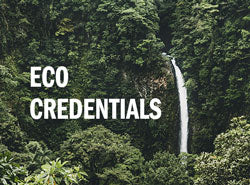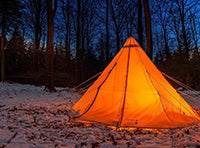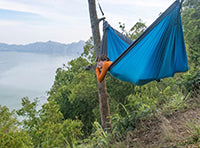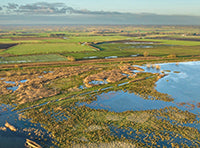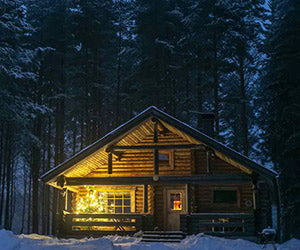Heading to the hills with nothing more than a pack on your back is enough to push many people out of their comfort zones. That’s a good thing, but it does mean that many wild campers get hung up about forgetting something essential. And admittedly, deciding what to pack for a wild camp can be a bit of a minefield. To put your mind at rest and help make sure you don’t forget anything vital, we’ve put together a wild camping kit list to help you pack your rucksack like a pro.
The key to an enjoyable wild camping trip is to strike a balance between the weight of your pack and the items you need for a comfortable and enjoyable night. It’s a good idea to gather all your gear including food and water ahead of a trip. Go for a wander round the house and up the stairs to check the weight of your load. Be really honest with yourself when doing this. If your pack feels heavy as you climb the stairs, imagine how heavy it’ll feel if you’re doing a long walk with big hills to climb. If that’s the case, spread everything out and think about what you really need and what you could actually do without.
As you’ll spend a fair amount of time carrying your kit, a backpack can make or break an enjoyable wild camp. Your rucksack should be big enough to fit in everything you need, without having to strap a load of kit to the outside. The pack itself shouldn’t be too heavy either. The last thing you want is to spend a lot of time and money on lightweight kit and then realise your rucksack is the very thing that’s weighing you down.
But the most important consideration when buying a pack is the fit. Selecting the right pack for you is vital. You want a pack that is the correct size for your back length. Most multi-day packs come in a range of sizes and there are packs designed specifically for women too. It should feel comfortable when loaded. Look for a padded harness with contoured straps to avoid sore shoulders and a supportive hipbelt, as your hips should bear most of the weight. With free delivery (on orders over £30) and our flexible returns policy, you can pick a pack at WildBounds and send it back if it’s not the one for you.
You’ll also want to make sure your kit stays dry. Most packs aren’t waterproof, and though they often come with rucksack covers, these can rarely be counted on to keep the contents of your pack completely dry. That’s why we’d recommend using a rucksack liner or putting your kit in dry bags. This will give peace of mind that you won’t have to sleep in a soggy sleeping bag! If you can’t afford to invest in dry bags right now, a good hack is to use heavy-duty rubble sacks instead, which are widely available from DIY stores. Carefully fold over the top to make it hard for water to get in.
Come nightfall, you’ll want some kind of shelter. What to take comes down to personal preference. A double-skinned tent with an inner and a flysheet is the obvious option, or for stealthy solo camps a bivvy bag is an excellent choice. If you’re heading to the woods you might consider taking a hammock and tarp, or even a small tree tent. Ultralight shelters that make use of trekking poles instead of tent poles or single-skin tents (like the Lightwave Sigma series) are also popular wild camping options.
Whichever shelter you choose, you’ll definitely want an insulated sleeping mat and a sleeping bag so you can stay warm and cosy all night long. Take a look at the weather forecasts and see how low the temperature is likely to drop overnight in order to assess how warm a sleeping bag you’ll need. Remember that if you’re planning to camp high up, conditions will be cooler. Under normal atmospheric conditions, as altitude increases, air temperature drops between 1°C and 3°C for every 1,000ft (300m) of height gained. So, for summer wild camping in the hills, a two-season bag with a lower temperature limit in single digits will suffice. For camping in early spring and late autumn, you’ll need a three-season bag with a lower limit rated below zero. For winter camping – which we wouldn’t recommend unless you’re an experienced wild camper – you’ll need a full-on four-season bag.
Don’t forget the value of an insulated sleeping mat either. This can really help to boost warmth. Mats are usually given an R-rating, which assesses a sleeping mat’s ability to insulate its user from the ground. This insulation is measured on a scale from 0 to 6. The higher the R-rating, the warmer it will be.
One of the joys of wild camping is cooking up a storm in the great outdoors. A common misconception about wild camping is that you’re stuck with super noodles, pasta n' sauce or freeze-dried meals – not that there's anything wrong with those after a long day’s walking. But with just a few additional items you can actually cook up some pretty gourmet grub.
But that does mean you’ll need a lightweight camping stove, a cooking pot and an eating utensil (the humble spork is the best option). If you’re flying solo you can simply eat out of the pan, saving you the weight of carrying in a bowl too. If there are two of you, you might want to add a couple of bowls to your pack. A hot brew – whether tea, coffee or steaming hot chocolate – is a real treat on a wild camp, so we always take a mug too.
If you are planning on cooking something a little more upmarket, a compact folding knife is a good idea, such as a penknife, pocket-knife or Swiss Army Knife. The James Brand’s Ellis is our go-to camp companion.
Always take a lighter, some waterproof matches or a fire steel, even if your stove has an auto ignition. Stoves can be temperamental, and take it from us, cold rations aren’t nice.
A water filter is a great investment too. If you’ve picked your wild camp spot strategically you may have a natural water source nearby. The weight of multiple litres of water can add up, so having a stream or tarn in the vicinity is ideal. Filtering water will take out most of the bugs and nasties that might be lurking in there. You’ll also want a hydration bladder or a large water bottle to keep your water in.
If there’s one thing we know about the UK it’s that you can never count on the weather. So even if the forecast is for wall-to-wall blue skies and sunshine, it’s still a good idea to pack your waterproofs. You’ll want to wear comfortable walking trousers and a synthetic or merino base layer (not a cotton T-shirt) that wicks away sweat. Packing layers is a good idea, especially if you’re heading to the hills where temperatures can change quickly. A midlayer such as a polyester fleece and a down or synthetic jacket to chuck on when you stop are perfect. Pack gloves and a beanie too – they’ll keep you warm in camp and even during the night if you find you’re a little chilly.
A good pair of socks can make all the difference between a fun walk and a miserable trudge – there’s nothing worse than getting blisters. We always pack spare socks for camp too – the last thing you want is for your feet to get soggy on the walk in, meaning you have to go without socks overnight and put damp socks back on the following morning.
What you decide to sleep in is largely personal preference. Some people will sleep in underwear or their walking base layers. Others might take PJs or comfy loungewear. For cold weather camps, you can’t beat good thermal base layers.
Finally, wear comfortable footwear, either a sturdy pair of trail shoes or walking boots, depending on the terrain and your load.
Again, whether you need a change of clothes for the morning is entirely up to you – you’ll know best whether you’ll be grumpy if you don’t have fresh underwear. But equally you’ll know if you’re the kind of person who isn’t likely to bother changing their clothes, in which case there’s not much point in taking spares, as it just means extra weight to carry.
We find this is where you can end up adding a lot of weight to your pack, but as a minimum you are likely to want to take a head torch (fully charged or with fresh batteries), a portable power bank, a cathole trowel, toilet paper and a sturdy ziplock bag for carrying out used loo roll. A small camp lantern can be a great shout too. Lastly, don’t forget hand sanitiser and, unless you’re prepared to be really gross, a small washbag containing toothbrush and toothpaste plus anything else you need, such as daily medication or your contact lenses.

